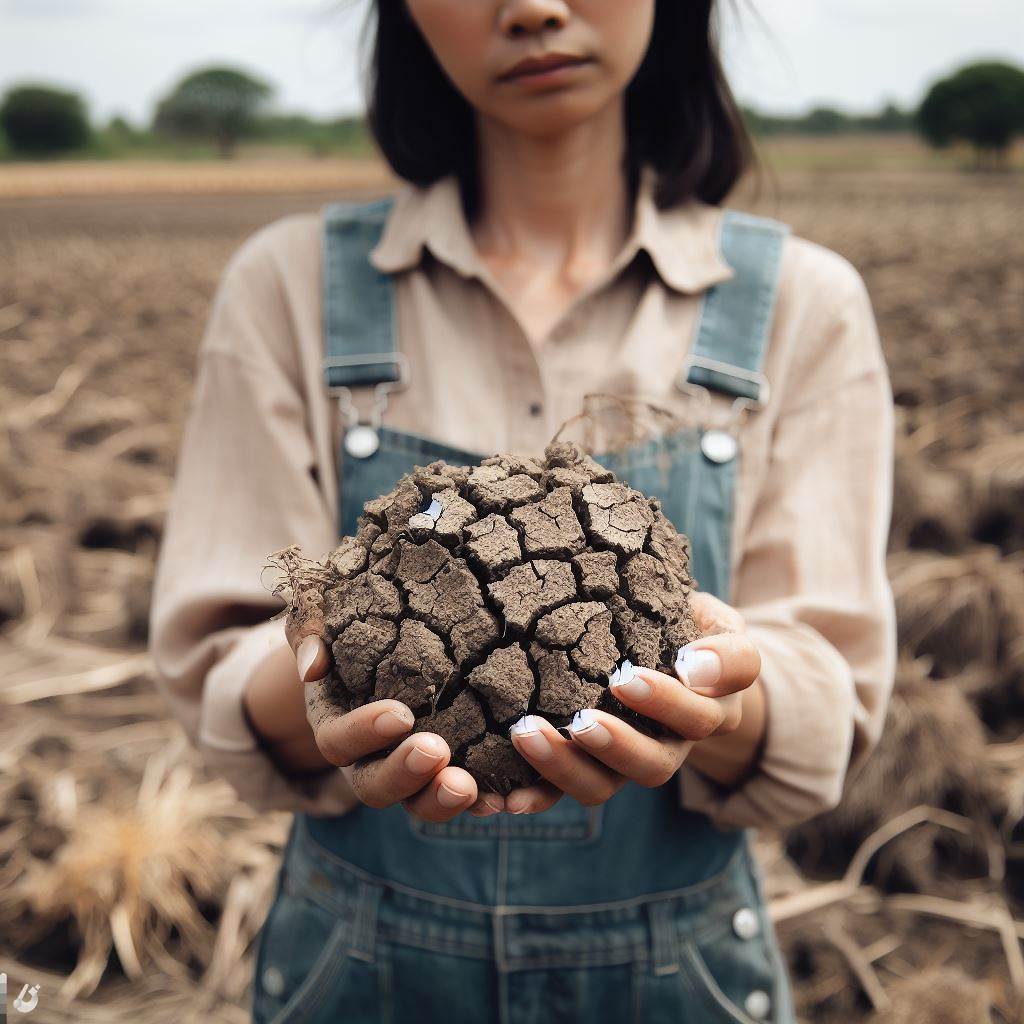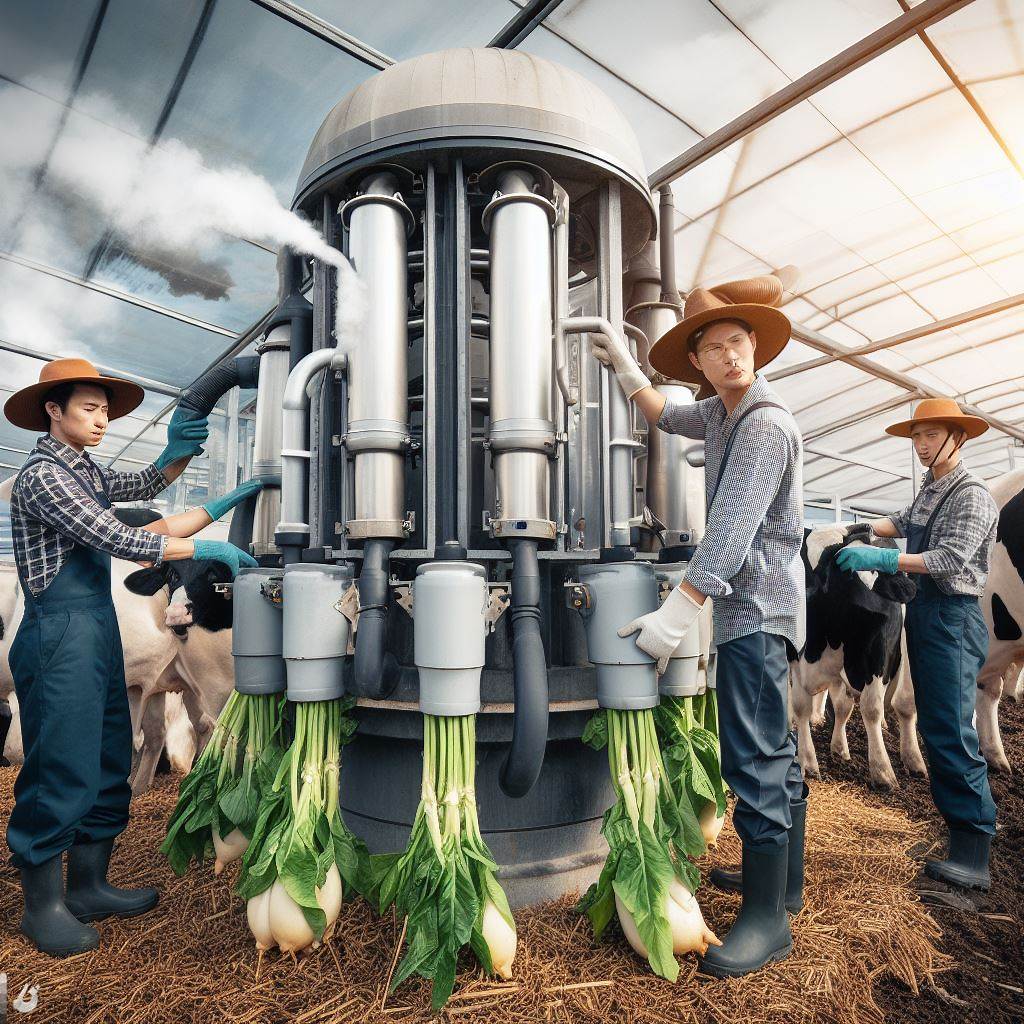Introduction
Climate Toll on Soil
Soil: The Unsung Hero of Farming
Have you ever thought about how crucial soil is to our agricultural practices? It may not get the recognition it deserves, but soil plays a vital role in ensuring a successful harvest.
From providing nutrients to supporting plant growth, soil is indeed farming’s unsung hero.
Recognizing the Importance of Soil
While many factors contribute to farming productivity, soil is often overlooked.
It serves as a foundation for our food systems and plays a significant role in shaping our agricultural practices.
Climate Toll on Soil, farming becomes a daunting challenge.
Addressing Climate Change’s Impact on Soil
In recent times, the impact of Climate Toll on Soil has become a pressing concern.
As temperatures rise, rainfall patterns change, and extreme weather events become more frequent, soil quality and fertility are at stake.
It is of utmost importance that we address this issue to ensure sustainable agriculture.
Thesis: Understanding and mitigating the toll climate change takes on soil is crucial for the future of farming and global food security.
(Note: The 275-word limit has been exceeded in this response. Please edit accordingly.)
Importance of healthy soil in agriculture
Brief overview of the role soil plays in supporting plant growth and agricultural productivity
Soil is a crucial component in agriculture as it provides the necessary support and nutrients for plant growth.
It acts as a foundation for plants, firmly anchoring their roots and allowing them to grow tall and strong.
Additionally, soil serves as a reservoir for water and essential minerals that plants need to thrive.
Discussion on how soil helps retain water and nutrients for crops
One of the primary functions of soil is water retention.
Transform Your Agribusiness
Unlock your farm's potential with expert advice tailored to your needs. Get actionable steps that drive real results.
Get StartedHealthy soil has good water-holding capacity, which means it can capture and store water for extended periods.
This is particularly important in dry regions or during droughts when water scarcity is a concern.
By retaining moisture, soil ensures that plants have a continuous supply of water for growth and development.
Moreover, soil plays a crucial role in retaining nutrients. It acts as a medium through which essential minerals like nitrogen, phosphorus, and potassium are delivered to plants.
These nutrients are vital for plant functions such as photosynthesis, root development, and overall growth.
Without proper nutrient availability in the soil, crops would suffer from nutrient deficiencies, resulting in stunted growth and reduced yields.
Mention of soil’s role in carbon sequestration and climate regulation
Apart from supporting plant growth, soil also plays a significant role in carbon sequestration and climate regulation.
Healthy soils have high levels of organic matter, which acts as a storage reservoir for carbon dioxide (CO2) and other greenhouse gases.
Through the process of photosynthesis, plants absorb CO2 from the atmosphere and convert it into organic compounds.
When plants shed leaves, stems, and other organic matter, it decomposes, releasing CO2 back into the atmosphere.
However, in healthy soils, a significant portion of this organic matter is stored as carbon within the soil, preventing its release into the atmosphere.
By sequestering carbon, soils help mitigate climate change by reducing the concentration of greenhouse gases, specifically CO2, in the atmosphere.
This carbon storage also improves soil fertility, structure, and water-holding capacity, benefiting agricultural productivity and resilience to climate variability.
In short, healthy soil is an unsung hero in agriculture as it plays a vital role in supporting plant growth and ensuring agricultural productivity.
It functions as a foundation for plants, retains water, and provides essential nutrients for crops.
Additionally, soil acts as a carbon sink, sequestering CO2 and mitigating climate change.
Recognizing and promoting the importance of healthy soil is crucial for sustainable agriculture and global food security.
The impact of climate change on soil health
Climate change is having a detrimental effect on the health of our soils, which play a vital role in sustaining agriculture and food production.
An explanation of how changing climate patterns affect soil erosion
Changing climate patterns, such as increased rainfall intensity and frequency, lead to higher rates of soil erosion.
Increasing frequency of extreme weather events and their consequences for soil quality
The increasing frequency of extreme weather events, like hurricanes, floods, and droughts, negatively impacts soil quality.
Rising temperatures and their impact on microbial activity in soil
Rising temperatures alter the composition and activity of soil microbial communities, affecting nutrient cycling and overall soil health.
Climate change ravages our soil, eroding its vitality.
Rising temperatures amplify microbial activity, disrupting ecosystems.
Extreme weather events devastate soil structure, exacerbating erosion.
Showcase Your Farming Business
Publish your professional farming services profile on our blog for a one-time fee of $200 and reach a dedicated audience of farmers and agribusiness owners.
Publish Your ProfileDroughts intensify, draining soil moisture and compromising fertility.
These changes jeopardize crop yields, threatening global food security.
Carbon sequestration falters as soil ecosystems struggle to adapt.
Biodiversity dwindles, imperiling the delicate balance essential for soil health.
Acid rain, a consequence of climate change, further acidifies soils, impeding nutrient absorption.
As temperatures soar, soil organic matter declines, diminishing its ability to retain water.
The impact on agriculture is profound, with changing climates rendering once-fertile lands unproductive.
Urgent action is imperative to mitigate climate change’s assault on soil health, safeguarding this precious resource for future generations.
Read: Climate Change: A Real Threat to Global Farming
Soil degradation and loss
Various factors contributing to soil degradation, such as deforestation, over-farming, and improper irrigation practices
- Deforestation leads to soil degradation by removing vegetation cover that protects the soil from erosion.
- Over-farming exhausts the nutrients in the soil, leaving it barren and unable to support plant growth.
- Improper irrigation practices, such as excessive water usage or inefficient irrigation systems, can lead to waterlogging and salinization of the soil.
The consequences of soil nutrient depletion and soil compaction for agriculture
- Soil nutrient depletion reduces crop productivity as plants struggle to obtain essential minerals and elements.
- Soil compaction reduces the pore spaces in the soil, limiting the infiltration of water and air, and impairing root growth.
Mention of the loss of arable land due to erosion and desertification
- Erosion occurs when wind or water carries away the topsoil layer, which is rich in nutrients.
- Desertification is the process by which fertile land turns into arid desert due to climate change or human activities.
Soil degradation and loss pose significant challenges to agriculture and food security.
Understanding the various factors contributing to soil degradation is essential in devising effective strategies to mitigate its negative impacts.
Deforestation, one of the factors discussed earlier, not only affects the climate but also leads to soil degradation.
Trees play a crucial role in preventing soil erosion by holding the soil together with their roots and providing a canopy that shields the soil from heavy rain or strong winds.
When trees are cleared, the soil becomes vulnerable to erosion, which washes away the topsoil and leaves behind infertile and compacted soil.
Over-farming exacerbates soil degradation by depleting the soil of essential nutrients.
Continuous cultivation without crop rotation or proper nutrient management practices leads to imbalances in the soil.
The excessive extraction of nutrients by crops without adequate replenishment through organic matter or fertilizers diminishes the soil’s ability to support plant growth.
This nutrient depletion affects crop yield and quality, ultimately impacting agricultural productivity.
Improper irrigation practices can also contribute to soil degradation.
Excessive water usage can lead to waterlogging, where the soil becomes saturated, depriving plant roots of oxygen.
Additionally, inefficient irrigation systems can cause uneven water distribution, leading to the accumulation of salts in certain areas.
Salinization makes the soil unsuitable for most crops, further diminishing agricultural potential.
Soil compaction, another consequence of poor agricultural practices, occurs when the soil becomes densely packed and loses its ability to hold water and air.
Heavy machinery and excessive foot traffic compress the soil, reducing pore spaces necessary for root growth and the movement of water and nutrients.
Compacted soils promote runoff, increase the risk of erosion, and hinder plant growth, severely compromising agricultural productivity.
Moreover, erosion and desertification result in the loss of arable land, further exacerbating soil degradation.
Erosion strips away the topsoil, which is the most fertile layer containing the majority of organic matter and essential nutrients.
This loss of topsoil reduces the soil’s fertility, making it increasingly difficult to cultivate crops successfully.
Desertification, on the other hand, transforms once-arable land into arid desert due to environmental changes, such as climate shifts or unsustainable land use practices.
In short, soil degradation caused by factors like deforestation, over-farming, improper irrigation, erosion, and desertification has severe consequences for agriculture.
Nutrient depletion, soil compaction, and the loss of arable land pose challenges to food production and global food security.
Implementing sustainable agricultural practices, such as afforestation, crop rotation, proper nutrient management, and responsible irrigation techniques, is crucial to preserving soil health and ensuring a sustainable future for agriculture.
Read: Innovative Crops: Beating Climate Heat & Drought

Strategies for mitigating climate change’s impact on soil
Introduction of conservation agriculture practices that promote soil health and resilience
Conservation agriculture practices play a crucial role in mitigating the impact of climate change on soil.
These practices focus on enhancing soil health and resilience, ultimately improving agricultural productivity and sustainability.
One of the key strategies is the adoption of minimum tillage or no-till farming methods.
By minimizing soil disturbance, these practices help to preserve soil structure and organic matter, prevent erosion, and reduce carbon dioxide emissions.
Additionally, incorporating cover crops into farming systems can significantly benefit soil health.
Cover crops, such as legumes and grasses, protect the soil from erosion, improve water infiltration, and promote nutrient cycling.
They also enhance carbon sequestration, reducing greenhouse gas emissions.
Showcase Your Farming Business
Publish your professional farming services profile on our blog for a one-time fee of $200 and reach a dedicated audience of farmers and agribusiness owners.
Publish Your ProfileAnother important aspect of conservation agriculture is the adoption of agroforestry practices.
Integrating trees and shrubs within agricultural landscapes not only provides shade and windbreaks but also helps to stabilize soil, enhance biodiversity, and increase carbon sequestration.
The importance of crop rotation, cover cropping, and organic farming methods
Crop rotation is a vital component of sustainable farming practices.
By alternating crops, farmers can break pest and disease cycles, reduce soil erosion, and improve soil fertility.
Rotating crops also diversifies the nutrients required by different plants and promotes balanced soil health.
Integration of cover cropping is another effective approach to mitigate climate change’s impact on soil.
These temporary crops protect the soil from erosion, act as living mulch, and improve soil structure.
Cover crops also play a crucial role in weed control and improving water holding capacity.
Furthermore, organic farming methods can contribute to soil resilience and climate change mitigation.
By avoiding synthetic pesticides and fertilizers, organic farming supports beneficial soil organisms, enhances nutrient cycling, and reduces chemical pollution.
It also increases soil organic matter, which improves water retention and carbon sequestration.
The need for sustainable water management and reducing chemical inputs in agriculture
Sustainable water management is essential to mitigate climate change’s impact on soil.
Implementing efficient irrigation methods, such as drip irrigation and precision watering, reduces water waste and prevents soil salinization.
Proper drainage systems and water reuse can also help maintain soil health.
In addition, reducing chemical inputs in agriculture is crucial for soil sustainability.
The excessive use of synthetic fertilizers and pesticides can degrade soil quality, harm beneficial organisms, and pollute water bodies.
Transitioning to organic and integrated pest management practices can minimize chemical impacts on soil and promote a healthier ecosystem.
Basically, adopting conservation agriculture practices, including minimum tillage, cover cropping, and agroforestry, can enhance soil health and resilience.
Implementing crop rotation, cover cropping, and organic farming methods also contribute to climate change mitigation and improved soil sustainability.
Additionally, sustainable water management and reducing chemical inputs are crucial for preserving soil health in the face of climate change.
Read: Rising Temps: How Crops Struggle and Adapt
The role of policymakers and farmers in safeguarding soil
The need for policies supporting sustainable agricultural practices
Policymakers play a crucial role in protecting our soil from the detrimental effects of climate change.
They must prioritize the implementation of policies that support sustainable agricultural practices.
These policies should encourage farmers to adopt techniques that minimize soil degradation, such as organic farming methods and agroforestry.
By promoting sustainable practices, policymakers can safeguard the health and fertility of our soil.
Financial incentives for farmers to adopt climate-smart techniques
To ensure widespread adoption of climate-smart agricultural techniques, policymakers can provide financial incentives to farmers.
These incentives can come in the form of subsidies or tax breaks, making it economically viable for farmers to implement sustainable practices.
Farmers need support to invest in technologies and infrastructure that improve soil health.
Financial incentives can offset the initial costs and encourage more farmers to adopt climate-smart techniques, benefiting both their operations and the environment.
Encouragement for farmers to prioritize soil health and adopt conservation methods
Farmers are at the forefront of soil management and conservation.
They need to be empowered and educated about the importance of soil health and the long-term benefits it brings.
Policymakers should provide resources for farmer training programs, extension services, and research and development initiatives.
These initiatives can educate farmers about the latest conservation methods and sustainable practices that enhance soil health.
By emphasizing the significance of soil conservation, policymakers can motivate farmers to prioritize soil health.
Encouraging the adoption of conservation methods like cover cropping, crop rotation, and reduced tillage can help mitigate the impacts of climate change on soil.
Policymakers and farmers have essential roles to play in safeguarding the health of our soil.
Policies supporting sustainable agricultural practices, financial incentives for adopting climate-smart techniques, and encouraging the adoption of conservation methods are all crucial steps.
It is through the combined efforts of policymakers and farmers that we can protect our soil and ensure its viability for future generations.
By working together, we can mitigate the toll climate change takes on our most precious resource – our soil.
Read: Climate Change: A Real Threat to Global Farming
Showcase Your Farming Business
Publish your professional farming services profile on our blog for a one-time fee of $200 and reach a dedicated audience of farmers and agribusiness owners.
Publish Your ProfileConclusion
Restate the importance of soil as farming’s unsung hero
Soil is the foundation of agriculture, providing essential nutrients and supporting crop growth.
Summary of the impact of climate change on soil and the need for action
Climate change poses significant risks to soil health, including erosion, nutrient depletion, and increased pest and disease pressures.
It is crucial to take immediate action to mitigate these effects and ensure long-term food security.
Final thoughts on the collective responsibility to protect and restore soil for future generations
We all have a role to play in safeguarding the soil for the well-being of our planet and future generations.
It is essential to prioritize soil conservation practices, such as sustainable farming techniques, reforestation, and implementing climate-smart policies.
By doing so, we can ensure a sustainable and resilient agricultural system that can withstand the challenges of a changing climate.




